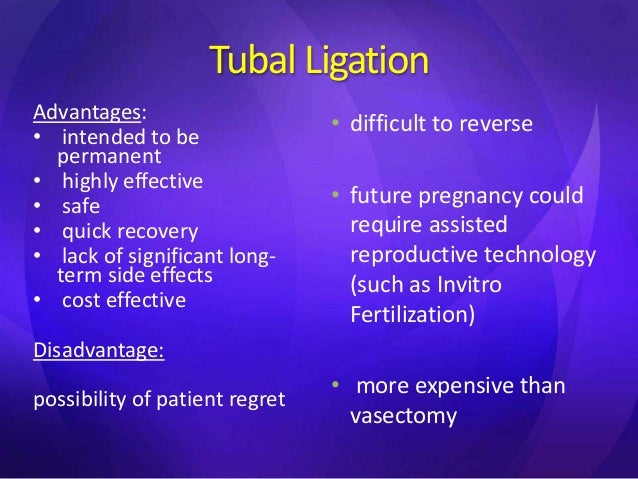Tubal ligation, also known as tubal ligation, is a definitive sterilization surgery that consists of cutting, tying or placing a ring in the fallopian tubes, thus interrupting the communication between the ovary and the uterus, which prevents sperm from reaching the egg and fertilization occurs, permanently preventing pregnancy.
The tubal ligation is not usually reversible, however, depending on the type of surgery performed, there may be a small chance that you can get pregnant again. Thus, the type of tubal ligation should be discussed with the gynecologist to find the best solution for the woman, as well as other contraceptive options. Learn more about contraceptive methods.
The tubal ligation is performed by the gynecologist, being made available by the SUS, as a form of family planning, indicated for women over 25 years old or who have at least two living children, in addition to being indicated in cases where a pregnancy can put the woman at risk, such as severe heart, kidney or lung disease, very high blood pressure or severe diabetes, for example.
who can do
Tubal ligation is a voluntary surgery, that is, the woman is the one who decides whether or not to do it, and according to the family planning law [1,2], this surgery can be performed by women over 25 years of age or who have at least two living children and who do not wish to become pregnant.
In addition, the doctor may recommend tubal ligation in situations where a pregnancy can cause serious risks to the woman or the baby, such as having performed more than three cesarean sections, or having severe heart, lung or kidney disease, negative RH problems, very high blood pressure, or severe diabetes especially in women who have had many children, for example.
It is important to emphasize that, despite having conditions in which the tubal ligation can be recommended by the gynecologist, the decision to perform the surgery is the woman’s, and therefore, the advantages, disadvantages, possibility of failure, and possible complications of the surgery.
how is it done
Tubal ligation is a simple surgical procedure, performed by the gynecologist, and takes about 40 minutes to 1 hour. This procedure aims to avoid the contact of the sperm with the egg, which happens in the fallopian tubes, thus avoiding fertilization and pregnancy.
So, the doctor makes a cut in the tubes and then ties the ends, or simply puts a ring in the tubes, to prevent the sperm from meeting the egg. For this, a cut can be made in the abdominal region, which is more invasive, or it can be done by laparoscopy, in which small holes are made in the abdominal region that allow access to the tubes, being less invasive. See more about laparoscopy.
Most of the time, the woman can do the tubal ligation after the cesarean, avoiding having to have a new surgery.
Advantages of tubal ligation
Although it is a surgical procedure and requires care after surgery, tubal ligation is a permanent contraceptive method, being associated with almost zero chances of pregnancy.
In addition, there are no long-term side effects, it does not interfere with breastfeeding when it is performed after childbirth and it is not necessary to use other contraceptive methods.
Disadvantages of tubal ligation
Tubal ligation is a permanent contraceptive method, having the disadvantage of being difficult to reverse, especially if the woman regrets the surgery and wishes to have a child again.
In addition, there is a possibility of surgery failure, which can lead to tubal or ectopic pregnancy, in which the fertilized egg grows inside the fallopian tube, requiring immediate treatment guided by an obstetrician, who may indicate the use of drugs to promote abortion. or surgery to remove the embryo, for example.
Is it possible to get pregnant after tubal ligation?
Tubal ligation has an effectiveness of about 99%, that is, for every 100 women who undergo the procedure, 1 becomes pregnant, which may be related to the type of tubal ligation performed, being mainly related to tubal ligation that involves the placement of tubal ligation. rings or clips on the horn.
How is the recovery
After tubal ligation, it is important for the woman to take some care to avoid complications and, for this, it is recommended to avoid having intimate contact, performing heavy tasks, such as cleaning the house, or practicing physical activity, for example.
In addition, during the recovery period, it is important that the woman rests and has a healthy diet that helps in healing, as well as taking light walks, according to the doctor’s guidance, to favor blood circulation and promote faster recovery. fast.
However, if there is any abnormal bleeding or excessive pain, it is important to inform the gynecologist for an evaluation and treatment, if necessary.
Possible complications
Tubal ligation is considered a safe procedure, however, like other surgeries, it can have risks, such as bleeding, infection or damage to other internal organs, for example.
